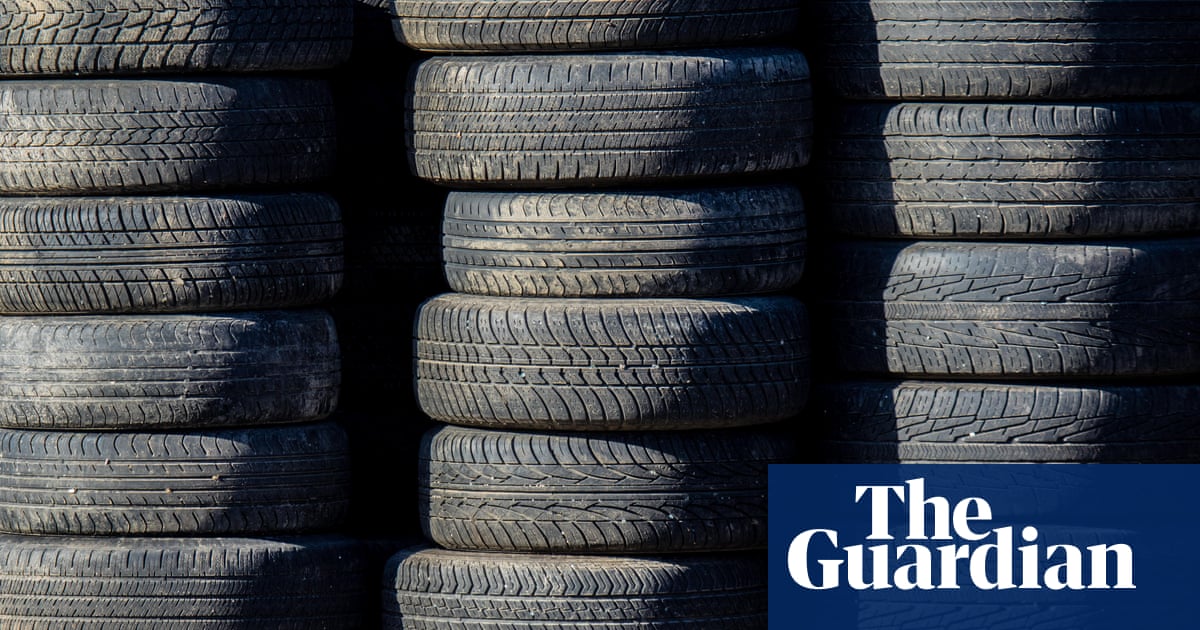
Scientists are “increasingly concerned” by the health impact of air pollution produced by the wear of vehicle tyres. The particles are especially damaging due to the toxic chemicals they are made from, say the scientists from Imperial College London.
The warning follows UK government data that shows significantly more tiny pollution particles now come from tyre erosion than are emitted from vehicle exhausts.
The report estimates 52% of all the small particle pollution from road transport came from tyre and brake wear in 2021, plus a further 24% from abrasion of roads and their paint markings. Just 15% of the emissions came from the exhausts of cars and a further 10% from the exhausts of vans and HGVs.
However, trials of new types of tyres sponsored by Transport for London (TfL) found they could result in up to 35% less emissions. The EU is also due to regulate tyre emissions in a world first, with new standards due to be in force by mid-2025.
Exhaust emissions from UK vehicles have fallen by 90% since 1996, according to the government data, owing to stricter standards being enforced. As a result, the particles from tyres, brakes and roads have become the main cause of pollution from traffic, presenting a new frontier in efforts to reduce levels of dirty air.
Small particles separate from tyres as cars travel, become airborne and can be inhaled deep into the lungs. Air pollution causes 26,000 to 38,000 early deaths a year in England and particle pollution has been linked to a wide range of diseases. Larger particles of tyre wear are washed or blown into rivers and seas and are a significant component of the plastic pollution that has contaminated both people’s bodies and the planet, from the summit of Mount Everest to the deepest oceans.
The Imperial College London report says 6m tonnes of tyre wear particles are released globally each year. In London alone, it says, 2.6m vehicles emit about 9,000 tonnes of particles annually.
The particles may contain toxic chemicals including polyaromatic hydrocarbons and benzothiazoles, and heavy metals such as zinc and lead, the scientists said. But research on tyre wear and its effects had been neglected compared with work on fuel emissions, they said.
“Tyre wear particles pollute the environment, the air we breathe, and the water run-off from roads,” said Dr Zhengchu Tan, at Imperial’s department of mechanical engineering. “Even if all our vehicles eventually become powered by electricity instead of fossil fuels, we will still have harmful pollution from vehicles because of tyre wear.”
Prof Terry Tetley, at Imperial’s National Heart and Lung Institute, said: “We are growing increasingly concerned by the impact of tyre wear on human health. Simply walking on the pavement could expose us to this type of pollution. It is essential that we better understand the effect of these particles on our health.”
The Imperial team urged policymakers and scientists to embark on ambitious research on tyre wear, including solutions such as better tyres, devices that could capture particles and ways to incentivise public transport, cycling and walking. They also called for tighter limits on the harmful chemicals used in tyres.
Tests reported in June found that in the most modern cars, almost 2,000 times more particle pollution could be produced by tyre wear than was pumped out of their exhausts. A specific chemical used in tyres has been linked to salmon deaths in the US, and California has proposed a ban.
A new type of tyre, designed by the startup company Enso specifically for electric vehicles (EVs) and to produce less tyre wear, was tested recently in a six-month trial sponsored by TfL and using dozens of vans operated by Royal Mail and the delivery company DPD.
The results showed that Enso’s tyres produced less tyre pollution and were more energy efficient than budget range tyres, meaning greater range per battery charge. They were also equal to or better than premium tyres, and the company said they would cost 10% less.
Rikesh Shah, of TfL, said: “We’re pleased to see this promising new data and are excited to see how the market responds.”
Enso’s chief executive, Gunnlaugur Erlendsson, said Enso’s tyres wore more slowly because they used higher grade materials and were designed specifically for electric vehicles, which can be heavier and apply higher torque to the wheels. He said they would cost less as the company planned to sell them directly to drivers, rather than via garages. The UK government is an investor in the company, which has raised £5m to date.
“We don’t want to have EVs on the roads in the future and still be suffering from air pollution,” said Erlendsson. “We want to enable EVs to be better – more range, less pollution.”
The Department for Environment, Food and Rural Affairs has been approached for comment.











